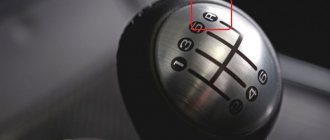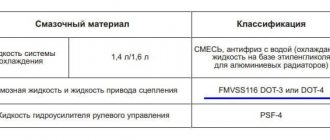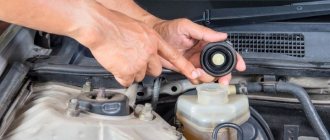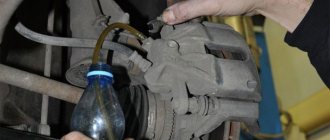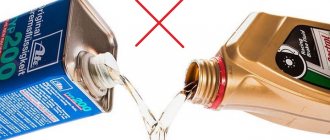Many car owners are faced with the fact that brake fluid suddenly disappears from the reservoir. At the same time, the performance of the brakes deteriorates, and a noticeable puddle may form under the car. This article explains how to identify and fix the cause of the leak. It also says how you can get to a car service center or garage with this problem.
Features of braking systems
Modern brake systems consist of: a master cylinder, a master cylinder reservoir, wheel brake cylinders, hoses, pipelines, a brake booster, discs or drums, and pads. When braking, high pressure arises in the system, which forces the mechanisms to work and the car to reduce speed. If the system is leaking, brake fluid leaks. It can be associated with damage to various elements and manifest itself both during movement and braking, and while the car is parked.
How does the GTZ function?
The unit consists of the following parts:
- metal housing with holes for supplying brake fluid, pedal rod and connecting the expansion tank;
- 2 pistons with rubber seals;
- 2 return springs;
- guide bushings;
- end plug with gasket.
An expansion tank is attached to the top of the main distributor body, where excess fluid goes through compensation holes. Inside, the element is divided into 2 cylinders with separate pistons standing on the same axis.
The blind end of the housing is closed with a threaded plug; on the other side there is a flange for attaching to the vacuum booster. The brake pedal rod is attached to the first piston. The brake circuit pipes are connected to the lower holes - separately for the front and rear wheels.
The operating principle of the master brake cylinder looks like this:
- When you press the pedal, both pistons simultaneously move forward and push fluid into the circuit tubes. Under its pressure, the wheel cylinders are activated, compressing the pads on the discs.
- Part of the liquid that does not have time to pass into the tubes flows into the expansion tank through special bypass holes.
- When the driver releases the pedal, the springs push the pistons back, returning them to their original position. Liquid from the tubes and reservoir refills the cylinders.
- To compensate for the expansion of the liquid (for example, from heating), another pair of holes is provided leading to the expansion tank.
Sources of brake fluid leaks
If brake fluid leaks, you need to find the cause of the leak. It can leak from various parts of the system due to their wear, damage or loose fit. Therefore, it is necessary to visually inspect the elements for defects. Usually it is enough to determine the location of the leak.
In cold weather, the tank, made of cheap plastic, often cracks. A crack in the tank and drips on it are usually clearly visible upon inspection.
If brake fluid is leaking, this may indicate that the brake line has become depressurized. This breakdown is very dangerous. After all, when using the brake, the car will practically not slow down. The pedal will simply instantly go to the floor without much effort.
The answer to the question of where the brake fluid goes may be a violation of the integrity of the brake hose. On rubber products you can notice leaks and cracks, as well as other defects. Over time, an element may also lose its usual flexibility.
Why do brakes leak?
There are several reasons why a pipeline may lose its tightness.
- Mechanical damage. The most popular option. A falling stone or other foreign object can block the line or disrupt its integrity. In this case, repairs will require replacing the damaged element or plugging the tube in case of an emergency.
- Loose seals. This often happens due to the natural wear of rubber bands or seals. If the system leaks at the connection fitting, it is often enough to tighten it and everything will be fine. When the rubber band leaks, the element is replaced with a new one.
- Overheat. The serial brakes of many cars are not designed for aggressive driving, which leads to their overheating and, as a result, failure. Under the influence of a critical temperature, the seals can become deformed, which will lead to the system leaking in this place.
Checking the brake fluid level
Checking the brake fluid level is easy. It is enough to know the location of the tank under the hood of the car. The liquid in it should normally be approximately between the Min and Max marks.
If it is not enough, TJ should be topped up. However, some car models equipped with an anti-lock braking system may require bleeding of the brakes. Therefore, before performing the procedure, you should read the vehicle operating instructions.
Many experts recommend changing the brake fluid rather than adding it.
The rear brake cylinder is leaking, can I drive?
2 ALEX usually this kind of procrastination ends, I
was persuaded, I will change it. I frankly didn’t expect any other answer, the brakes are a serious matter.
the cylinder can be changed in the dark for reference winter -10 22-30 arrived from work, tomorrow at 9 I have to go far because I don’t have a hole and the services are already closed, then with the help of a flashlight, a hammer and 2 keys and WITHOUT A GRAM OF ALCOHOL in the yard at home I changed the cylinders at 2:00 am I finished everything and bled the brakes using a bleeding tool
of the minuses - after 23, the residents were periodically distracted, to which they received philosophical answers, because they usually spoke arm in arm, so I changed 4 front ones, and you need 1 rear one, in a word, don’t put your life and the lives of others more expensive
Well, I’m not at all sure about one cylinder, I just didn’t remove the second drum: I only removed the left one to check the condition of the pads. Or I might as well not look. I wonder if if I hadn’t looked, I would have lived and enjoyed life for the time being. I haven't looked at the front brakes yet either. There is only one sad thing: no one guarantees that the new cylinder will not leak the next day. Shouldn't you remove the drums once a week to check?
As far as working in the dark is concerned, it is certainly possible, but IMHO a cylinder screwed incorrectly in the dark is no better than the current one.
I wonder if I can even change it from the side without a pit or overpass? It seems that everything can be unscrewed there by touch.
Source
How to fix a leak
Eliminating a leak must begin with finding its cause. If it is obvious, you should purchase new spare parts and install them instead of the faulty ones. After this, you need to fill the brake fluid and bleed the system.
If independent diagnosis and repair of the brake system is difficult or it is not possible to determine the cause of the breakdown on your own, you must immediately contact a service station.
Now you know what to do if brake fluid leaves the system, how to find and fix the problem and get to your home or service center if it occurs on the road.
Have you ever encountered a fuel leak? Were you able to find and fix the problem on your own? How often do you experience brake system malfunctions and how do you prevent them? If you have any questions or want to tell us something interesting on the topic, write in the comments.
Symptoms of problems
The fluid brake system consists of many parts that can become unusable: pipes, wheel cylinders, calipers, drums and pads. Typical signs of a faulty master cylinder:
- After pressing the pedal, the car stops slowly. The reason is that the cuffs of one or two pistons have lost their tightness - they have cracked or “floated”.
- To slow down, you need to press the brake pedal hard. The phenomenon occurs due to swelling of the rubber of the piston seals.
- The brake pedal travel is too short. The fluid inside the cylinder has nowhere to go because the compensation hole is clogged. Another option is that the passage is blocked by a swollen rubber seal.
- A common symptom is pedal failure, the brakes coming on at the end of the stroke. This indicates complete wear of the cuffs; as a result, liquid penetrates behind the piston and rushes into the expansion tank - the cylinder “bypasses.”
- The pads do not release the brake discs and drums and get very hot when driving. Options: one of the pistons is jammed or the bypass hole is clogged.
The listed symptoms of a GTZ malfunction are similar to malfunctions of other elements. Pedal failure also occurs when a large amount of air enters the tubes or loss of fluid in one of the working cylinders. Sluggish deceleration and increased force on the pedal are often caused by a breakdown of the vacuum booster - a cracked membrane or a lack of tightness at the joints of the hose that takes off engine vacuum.
There are signs that clearly indicate the performance of the main hydraulic cylinder and the malfunction of other elements:
- during braking, the car pulls to the side - the problem lies in a certain circuit or wheel;
- jamming of the brake mechanisms of one wheel;
- creaking and squeaking when braking;
- heating the discs and pads on one wheel.
If you eliminate these symptoms, it will become easier to check the brake master cylinder in a garage. This also includes obvious brake fluid leaks and the knocking sound of worn calipers.
The tank is cracked - what to do first?
Some motorists mistakenly begin to dismantle the entire brake assembly. Calmness and a visual inspection are the first step towards a successful repair. Wet marks and smudges indicate a decrease in the level of the substance. If a crack is detected, experienced car owners advise replacing the tank immediately - sealing it will not help. What to do if an incident happens on the route?
Clutch hose repair method
Experts say one of the common reasons why clutch brake fluid has leaked is a damaged hose through which fluid circulates from the reservoir to the clutch.
Effective replacement tips:
- You need to remove the tank itself by removing the clamp from below.
- You should purchase a new hose, preferably red.
- You need to pull out the damaged hose carefully so as not to accidentally break off the plastic fitting.
It is important not to allow fluid to leak onto the fender or paint. After removing the tank, you should rinse it with water; it is also recommended to replace the clamps. We install the hose and tighten it without much effort. Don't forget to tighten the nuts as well.
Experts say that the hose often wears out. It must be checked periodically and, if damage is detected, replaced with a new one.
The rear brake cylinder is leaking, can I drive?
- To the beginning of the forum
- Forum Rules
- Old design
- FAQ
- Search
- Users
The other day I discovered that the rear brake cylinder was leaking, I haven’t opened the drum yet, but it’s already clear that everything is in the brake fluid, naturally the pads too. Since the pads are new (I changed them three months ago), the question arose: should I just replace the cylinder and let the pads dry out on their own, or change the pads too (in pairs, of course).
Naturally it is necessary, because the brake pads lose their properties when brake fluid gets on them. I had this happen, at first I only changed the cylinder (for reasons of economy), but soon I had to change the pads as well, as in that saying “the miser pays.” ".
Why bother changing them?
What properties do they lose? I wiped it with gasoline, set it up and drove off.


